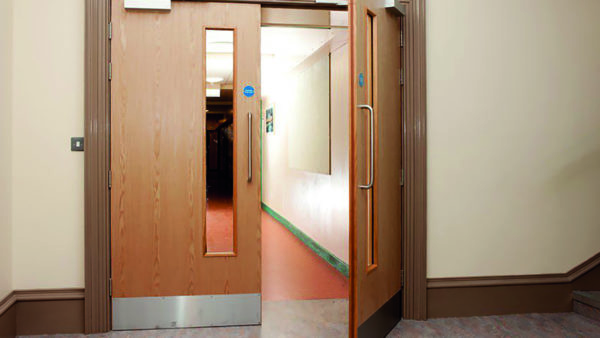GAI Technical Manager Douglas Masterson answers the question
The Independent Review of the ConstructionProduct Testing Regime was published in April. Its purpose was to identify any potential weaknesses in the system and to make recommendations for improvement.
The report highlighted the susceptibility to failure of some existing processes:
- Only construction products for which there is a designated standard are covered by the Construction Products Regulation (CPR ) – about two-thirds of products (approx 30,000) remain unregulated.
- Regulation was originally designed to create a level playing field for a single market and not to ensure a safe or sustainable product or building. As a consequence there isn’t a specific ‘UK system for testing the safety of construction products’.
- Everything depends on the relevant standards, how a product is to conform, how it is to be tested and accredited. And also how Conformity Assessment Bodies (CABs) themselves are reviewed by UKAS, and how UKAS itself is reviewed. The report found that this process can be “slow, insufficient and of variable quality”. The result is that many standards are outdated, inconsistent or non-existent.
- The CPR assessment process is seen as overly complex meaning few people fully understand it and therefore open to misuse.
“Manufacturers need to be honest and a breach of duty is subject to enforcement”
Remedies proposed in legislation
The primary targets of legislation are coverage and enforcement.
Coverage: all construction products will be brought into the scope of the CPR by virtue of a “general safety requirement”. This is derived from the EU General Product Safety Regulation where products are designed to function as part of a system rather than on a stand-alone basis. In addition, some products not currently covered by the CPR regime can be brought within it by virtue of being covered by a new designated standard; or by being added to a list of “safety-critical” products.
Enforcement: under the new regulatory regime, enforcement is to be strengthened by two new regulators: a National Regulator for Construction Products who will work with a new Building Safety Regulator based in the HSE. Manufacturers must share technical documentation and information with the National Regulator for Construction Products and/or enforcement authorities. They need to be honest and offer full disclosure to the Approved Body conducting the assessment, in the Declaration of Performance, in technical information and in all marketing/communciation information. A breach of any part of this duty is an offence subject to enforcement by the Regulator.
So what is missing from legislation?
A number of areas are missing according to the report. These include :
- Government, UKAS and the oversight of CABs) – questions over remit of UKAS (no enforcement powers) and requires more dynamic oversight of CABs to strengthen third-party certification schemes.
- Purpose of UKCA marking – there is no question over the fundamental purpose of marking or the potential to simplify the process. UKCA could be developed as a mark of safety or quality.
- Assessment process – this needs to be simplified and strengthened. The report proposes a series of graduated options to raise the standards of the system and making assessment of safety critical products more stringent.
- Conformity Assessment Bodies – it doesn’t believe CABs have demonstrated any sense of a need for change in the wake of the Grenfell tower fire. It wants a clearer statutory duty to be aware they’re acting in the public interest, and to warn the new regulator where they suspect manufacturers are manipulating the system.
- Product manufacturers – more self-regulation is required such as use of third-party certification schemes and the potential for a Code for Construction Product Information (CCPI).
- Government procurement – Government should use its buying power as an incentive to adopt good practice by setting out how designers, contractors and specifiers can approach safe building outcomes.
- Joint government-industry action plan – continuous engagement is required by government and industry to ensure success of Building Safety Act.
- Body of knowledge – this is particularly fragmented around fire, with many organisations engaged in this specialism. There is a need to pull a body of knowledge together which is accessible and kept under review with public interest at its core.
Conclusions
The report reflects on arguments used in defying or deflecting responsibility in the aftermath of the Grenfell Tower tragedy. It states that there are some truths which have emerged which are evident:
- Product manufacturers must develop products that do the job expected of them, and to market them honestly, making no false claims;
- CABs will test and assess those products against defined specifications, impartially and independently
- Designers must choose products with the performance that is fit for purpose, and then design them into the works so that the performance can be achieved;
- Constructors must bring everything together with the same objective in mind – to find better ways of doing things
- It is not for regulators or enforcement authorities to act as the industry’s quality assurance department, but it is their vital role to keep a watchful eye out for non-compliance, and to aid compliance;
- Regulators and enforcement authorities must see that regulations are enforced
- Future reforms should ensure that such principles are reiterated and reinforced.
Whilst it is not yet known to what extent the recommendations will be adopted by government, Michael Gove has said it will set out proposals for reform building on the work of the Review. GAI members should therefore note that many elements of this report will be of huge relevance going forward.
A Technical Briefing is at gai.org.uk/knowledge.
Take an online quiz for one CPD point at https://learninghub.gai.org.uk/login/index.php








